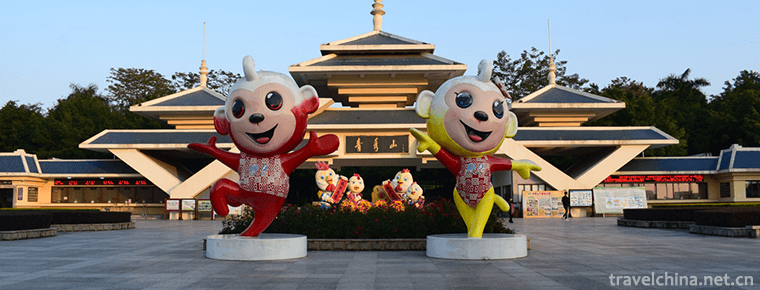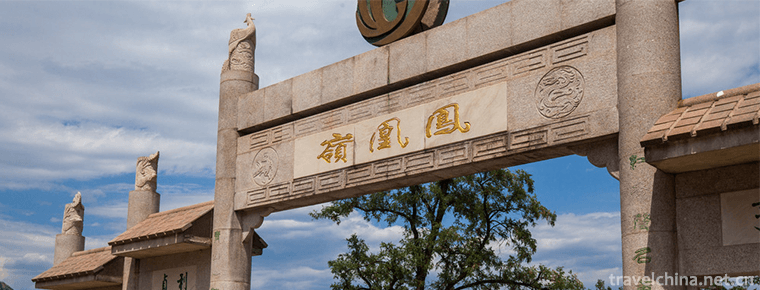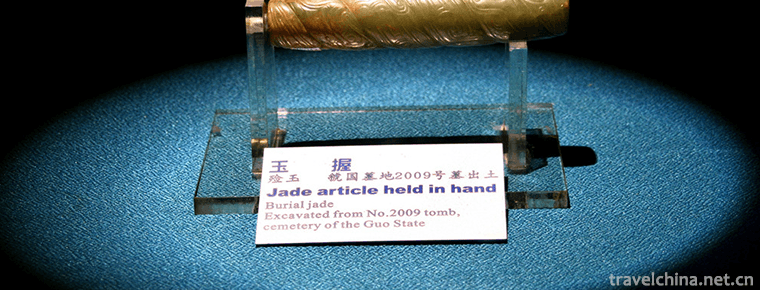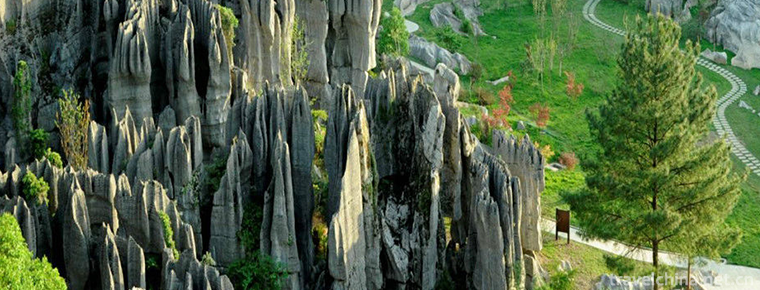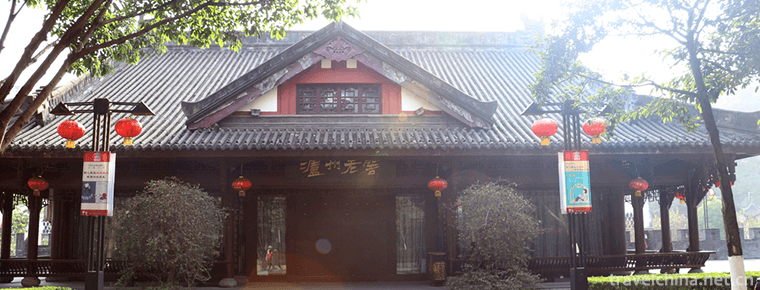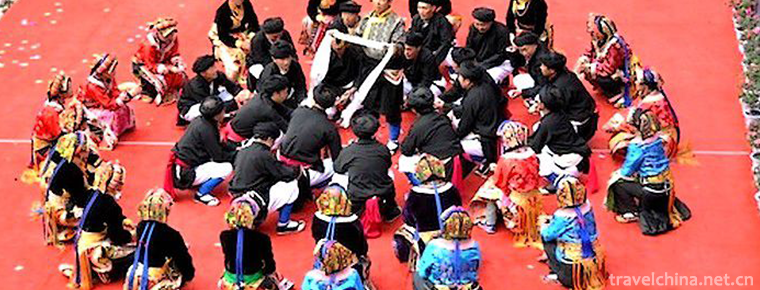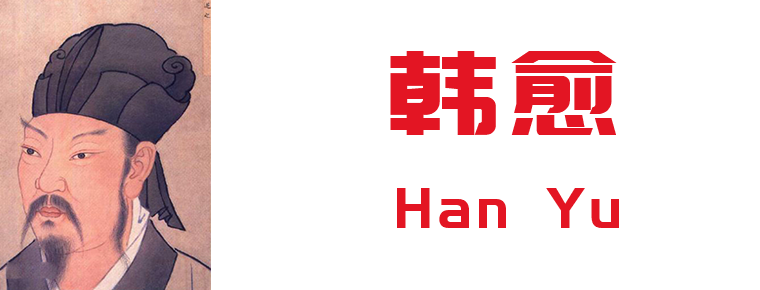Yibin economy
Yibin economy
In 2019, Yibin City will realize a GDP of 260.189 billion yuan, an increase of 8.8% over the previous year in terms of comparable prices. Among them, the added value of the primary industry was 27.764 billion yuan, an increase of 2.9%; the added value of the secondary industry was 130.892 billion yuan, an increase of 9.6%; the added value of the tertiary industry was 101.533 billion yuan, an increase of 9.8%. The contribution rates of the three industries to economic growth are 4.2%, 57.0% and 38.8% respectively. The three industrial structure was adjusted from 10.8:50.3:38.9 in the previous year to 10.7:50.3:39.0. The per capita GDP was 57003 yuan, an increase of 8.3% over the previous year. The energy consumption of 10000 yuan GDP decreased by 3.9% over the previous year.
In 2019, 74200 new jobs will be created in Yibin City, an increase of 0700 over the previous year. At the end of the year, the registered urban unemployment rate was 3.35%, down 0.04 percentage points. The total number of migrant workers in the city was 1.6836 million, down 1.1%. Among them, 1.1041 million migrant workers went out, down 3.9%; 578800 local migrant workers, an increase of 4.8%. The annual consumer price (CPI) rose by 2.3% over the previous year. Retail prices of goods rose by 2.2%. The producer price (PPI) of industrial producers rose by 0.1%, of which the price of means of production decreased by 1.9%, the price of means of living increased by 3.0%, and the purchase price of industrial producers (IPI) increased by 0.1%. From a regional perspective, the GDP of the main urban areas was 94.484 billion yuan, an increase of 9.7% over the previous year; the GDP of key development zones was 83.439 billion yuan, an increase of 8.5%; the GDP of the main agricultural production areas was 74.696 billion yuan, an increase of 8.2%; and the GDP of key ecological functional areas was 7.57 billion yuan, an increase of 8.1%.
In 2019, the total investment in fixed assets in Yibin will increase by 12.9% over the previous year, of which the investment in fixed assets (excluding farmers) will increase by 12.2%. From the perspective of industrial investment, the investment in the primary industry increased by 4.8%, the investment in the secondary industry increased by 3.6%, of which the industrial investment increased by 3.5%, and the investment in the tertiary industry increased by 17.3%. In terms of investment industries, the investment in culture, sports and entertainment, transportation, storage and postal services, leasing and business services, mining, water conservancy, environment and public facilities management increased by 104.2%, 30.8%, 30.7%, 21.0%, 19.7% and 18.3%, respectively. Private fixed assets investment decreased by 2.4%, accounting for 43.4% of fixed assets investment. Infrastructure investment increased by 15.0%.
In 2019, the local fiscal revenue of Yibin City is 44.092 billion yuan, an increase of 35.75% over the previous year. The local general public budget revenue was 17.549 billion yuan, an increase of 9.08%; of which, the tax revenue was 11.504 billion yuan, an increase of 816 million yuan, an increase of 7.64%. Local fiscal expenditure reached 73.367 billion yuan, an increase of 22.45%. Local general public budget expenditure was 46.362 billion yuan, an increase of 11.44%. In the whole year, the provincial government transferred loans to local governments to replace bonds of 3.495 billion yuan, and since 2015, the accumulated replacement bonds have reached 29.169 billion yuan. The total tax revenue of the whole year was 33.005 billion yuan, an increase of 11.8% over the previous year. Among them, the domestic value-added tax was 12.034 billion yuan, an increase of 8.5%; the domestic consumption tax was 5.97 billion yuan, an increase of 29.5%.
In 2019, the per capita disposable income of all residents in Yibin City is 26076 yuan, an increase of 10.2% over the previous year. According to their permanent residence, the per capita disposable income of urban residents was 36694 yuan, an increase of 9.6%. Among them, wage income was 21027 yuan, an increase of 9.9%; net operating income was 6430 yuan, an increase of 9.4%; net property income was 2710 yuan, an increase of 9.0%; net transfer income was 6527 yuan, an increase of 9.2%. The per capita disposable income of rural residents was 16999 yuan, an increase of 10.4% over the previous year. Among them, wage income was 5898 yuan, an increase of 9.9%; net operating income was 7500 yuan, an increase of 10.0%; net property income was 473 yuan, an increase of 12.1%; net transfer income was 3127 yuan, an increase of 12.2%.
In 2019, the per capita consumption expenditure of all residents in Yibin City was 18588 yuan, an increase of 11.0% over the previous year. According to their permanent residence, the per capita consumption expenditure of urban residents was 24635 yuan, an increase of 10.5%; among them, the expenditure on clothing, education, culture and entertainment increased by 18.3%, 15.2% and 14.4% respectively. The per capita consumption expenditure of rural residents was 13418 yuan, an increase of 11.2%; among them, the expenditure on education, culture and entertainment increased by 26.3%, the expenditure on transportation and communication increased by 12.3%, and the expenditure on housing increased by 12.2%. The Engel coefficient of urban residents was 36.1%, which was 0.9 percentage points lower than that of the previous year, with 34.6% in urban areas and 38.4% in rural areas.

Yibin economy
-
Huanglong Scenic Area
Huanglong Scenic Spot, World Natural Heritage, World Human and Biosphere Reserve, Green Globe 21 Certificate, National AAAAA Tourist Spot, National Key Scenic Spot.
Views: 191 Time 2018-12-12 -
Qingxiushan scenic spot
Qingxiushan Scenic Area is a national AAAAA scenic spot in Nanning. Qingxiu Mountain is a key scenic spot in Nanning. In addition to protecting and restoring the original historic sites such as Dong Q
Views: 178 Time 2018-12-12 -
Shangganling Xishui National Forest Park
Shangganling Xishui National Forest Park combines the strong local flavor and exotic style with the elegance of "paradise". It has both unique natural landscape and distinctive humanistic la
Views: 403 Time 2018-12-19 -
Fenghuangling Natural Scenic Park
Beijing Fenghuangling Natural Scenic Park is China's National AAAA Scenic Area. The scenic spot is located in the northwest of Haidian District, 51 kilometers away from Tiananmen straight line
Views: 200 Time 2018-12-26 -
Kuanguo Museum
The Kuanguo Museum is a special museum built on the site of the Kuanguo Cemetery in the Western Zhou Dynasty, a national key cultural relic protection unit. It covers an area of 100,000 square meters
Views: 222 Time 2019-01-13 -
Longlishi Sea Scenic Area
Located in Shilin Town, Wansheng District, Chongqing, Longlishi Sea Scenic Area is a karst geological park type natural scenic tourist area with a planned area of 4.7 square kilometers and a distance
Views: 249 Time 2019-02-06 -
Luzhou Laojiao Tourist Area
Luzhou Laojiao Tourist Area is located in Jiangyang District, Luzhou City, Sichuan Province. Its transportation is convenient. It is a tourist boutique created by Luzhou Laojiao Co., Ltd.
Views: 339 Time 2019-02-06 -
Bo Ba Shen en
Bobassengen is a unique folk large-scale narrative mass pot village dance created by Ganbao Tibetan Village in Jiarong Tibetan area, Lixian County, Sichuan Province. "Boba"
Views: 413 Time 2019-04-04 -
Huidong Fishing Song
Huidong Fishing Song is one of the traditional folk arts in Guangdong Province. From the Song Dynasty, fishing songs in the shallow sea of Huidong were introduced from the coast of Fujian Province.
Views: 219 Time 2019-05-05 -
Han Yu
Han Yu (768 - 824 December 25th) retreated. Henan Heyang (now Henan Province Mengzhou People. Claiming to be "Changli," the world is called "Han Changli" and "Mr. Changli"
Views: 168 Time 2019-09-07 -
Shixiang Lake
Shixiang lake is named after Shixiang temple, an ancient temple in the lake area. It is said that it was the place where Yan Yan, a general of the Three Kingdoms, rode an elephant to heaven.
Views: 211 Time 2020-10-16 -
Luzhou transportation
By the end of 2017, the number of civil motor vehicles in Luzhou had reached 678200, an increase of 74700 over the beginning of the year. Among them, 352400 cars (including 294 tricycles and low-speed trucks), an increase of 56500, and 323700 motorcycles, an increase of 17600
Views: 929 Time 2020-12-14

